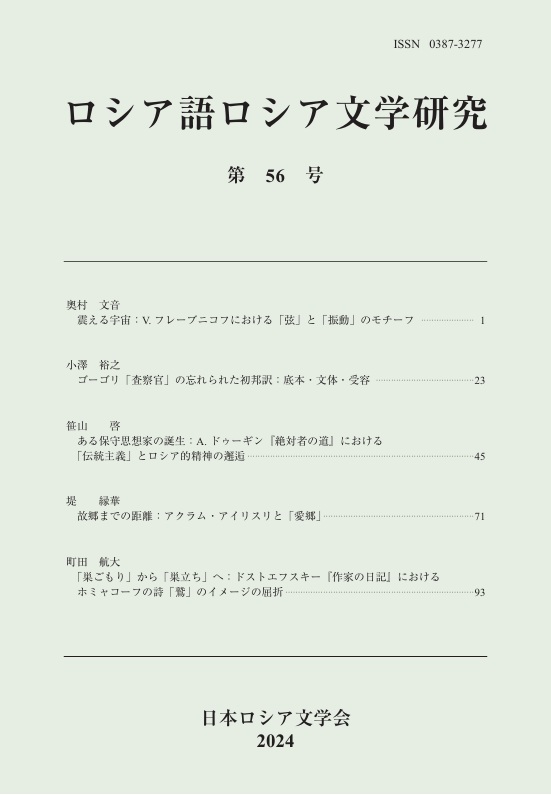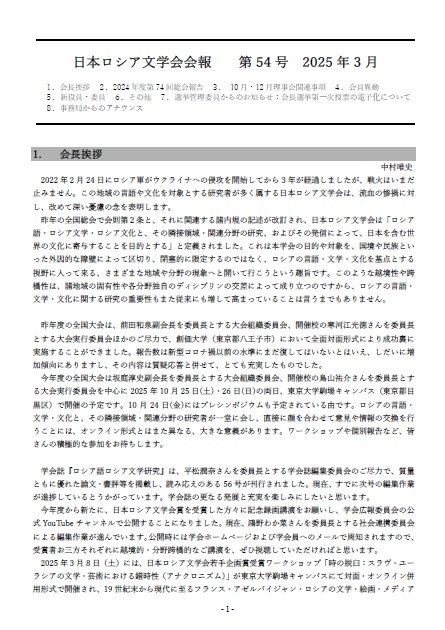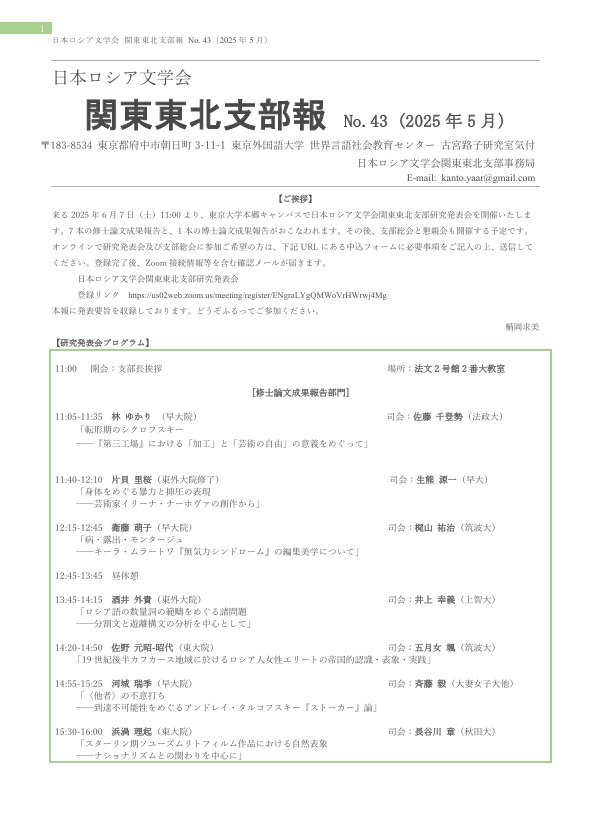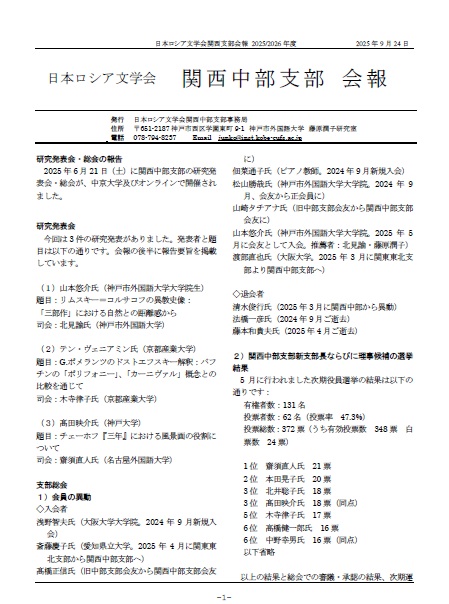ナリマン・スカコフ氏講演会開催のお知らせ
ハーヴァード大学スラヴ語スラヴ文学科のナリマン・スカコフ准教授による講演会を、下記の要領で開催します。
スカコフ氏はカザフスタン出身、オックスフォード大学で博士号を取得したのち、スタンフォード大学助教を経て、2021年より現職。
著書にThe Cinema of Tarkovsky: Labyrinths of Space and Time (Tauris: 2012)があるほか、Novoe literaturnoe obozrenie, Slavic Review, The Russian Reviewなど、ロシア研究の主要誌に次々と論文を発表している気鋭のロシア文化研究者です。
今回の講演は、1920年代末に終息したとされるロシア・アヴァンギャルドがその後のスターリン期に遂げた展開(特にソ連の周辺地域・民族を題材にした形式的実験)をたどる新著Reorientalism: From Avant-Garde to National Formのプランを紹介するものになります。
題目:Soviet Orientalism
日時:11月4日(金)18:00-19:30
開催方法:対面とZoomによるハイブリッド
会場:東京大学駒場キャンパス18号館4階コラボレーションルーム4
Zoom参加登録:https://u-tokyo-ac-jp.zoom.us/meeting/register/tZ0sd-iorjotGNYAOOc3OQeGQAFdrxOQexBm
使用言語:英語
要旨:
My monograph Reorientalism: From Avant-Garde to National Form presents the history of the Soviet avant-garde as a variegated portrait characterized by a geographically oriented nexus of displacement, asynchrony, and difference. The monograph seeks to challenge the canonization and theorization of the period between 1929, “the year of the great breakthrough,” and the beginning of the Great Patriotic War in 1941. Moreover, it brings into focus the Russian experimental tradition’s reconceptualization during the time of its supposed repression and decimation. Drawing upon extensive archival sources (twenty-two archives from six countries), the monograph explores theoretical works, prose fiction, children’s books, film scripts, photo books, and documentary and feature films created by its protagonists: Viktor Shklovsky, Aleksandr Rodchenko, Varvara Stepanova, Dziga Vertov, and Sergei Eisenstein. Each of these figures was a key experimenter with visual form, language, and sound during the 1920s; by the 1930s and early 1940s, they were channeling their creative energy eastward, toward the Soviet Orient. In doing so, they entered a new set of relations with the state and the discursive configurations it imposed, readily and enthusiastically adapting their knowledge and aesthetic convictions to the aims of the great socialist experiment. Reorientalism enters the longstanding debate about the relationship between the historical avant-garde and socialist realism by engaging the physical and discursive space of Soviet Central Asia, where the two movements’ paths converged during the 1930s. In line with the recent “global turn” in modernist studies, the monograph concludes that late modernism in the Soviet Union was neither a negation of socialist realism nor a capitulation to it, but a reorientation toward the Soviet periphery.




